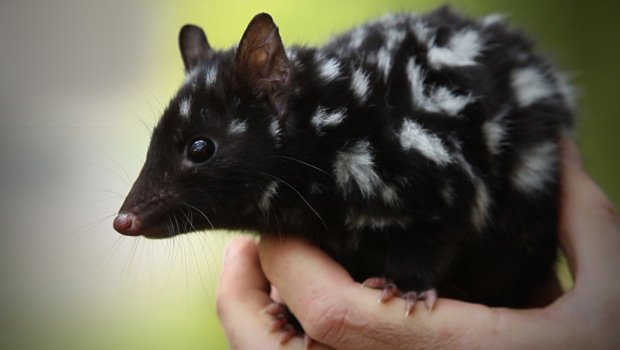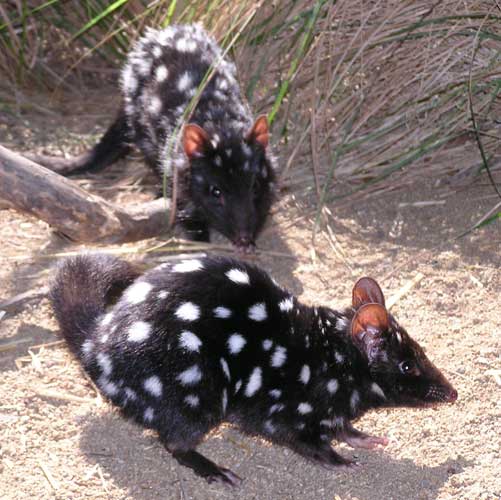Eastern quolls officially extinct on mainland

LAST WEEK MARKED 50 years since the last confirmed sighting of an eastern quoll on mainland Australia, long enough to classify these marsupials as locally extinct.
These pretty little carnivores – which eat insects and small mammals – once occupied a huge area from Melbourne to Brisbane. Today they are found only in Tasmania, where numbers are falling.
All hope is not lost, however. A plan to resurrect the species on the mainland is being hatched at the Secret Creek Sanctuary in Lithgow, NSW, 100km west of Sydney.
Bringing back the eastern quoll

Captive eastern quolls. (Credit: Secret Creek Sanctuary)
In Lithgow, the Australia Ecosystems Foundation (AEF) has been breeding eastern quolls from Tasmania for 10 years and is in talks with national parks about reintroducing them into the wild.
“Our project here is to maintain a genetically robust population of eastern quolls with the view to release them back into the wild on the mainland. I have been working with this population for over 10 years now and we are close to an agreement for release,” says Trevor Evans of Secret Creek and the AEF.
“We have some more research to do and issues to resolve, but I believe we could possibly release the quolls in 12-18 months,” adds Trevor.
The sanctuary currently has a population of 30 quolls, but plans are to breed as many as 100 per year. The result could be that, within a few years, we see eastern quolls once more on Australia’s populous eastern seaboard.
How to stop a repeat extinction
Dr Kellie Leigh, an endangered carnivore specialist with the AEF, says “the first stage of the project is to reintroduce eastern quolls back into a large, fenced sanctuary where they will be protected from foxes and feral cats while they establish a free-ranging population.”
“At the same time we can monitor how well they adapt to this environment, which habitats they prefer, what they hunt and how well they breed. Then we can use this information to develop the next stage of the reintroduction, to maximise their chances of survival back in the wild.”
According to Dr Scott Burnett, from the University of the Sunshine Coast in QLD, nobody knows for certain how the quolls became extinct on the mainland, but introduced predators and disease were contributors.
“The last known place that eastern quolls survived on mainland Australia was in an isolated population in Sydney,” Scott says. “This leads us to believe that disease may have been a significant factor in their extinction… and that this urban population was able to survive by virtue of the fact that they were isolated from all other populations of quolls.”
The Sydney group was probably wiped out by cars, cats and dogs, he adds.
Dr John Rodger, one of the first people to develop assisted breeding technologies for marsupials, agrees. Animal disease and its effect on endangered Australian species “is a very important issue that demands further research,” he says.
RELATED STORIES

